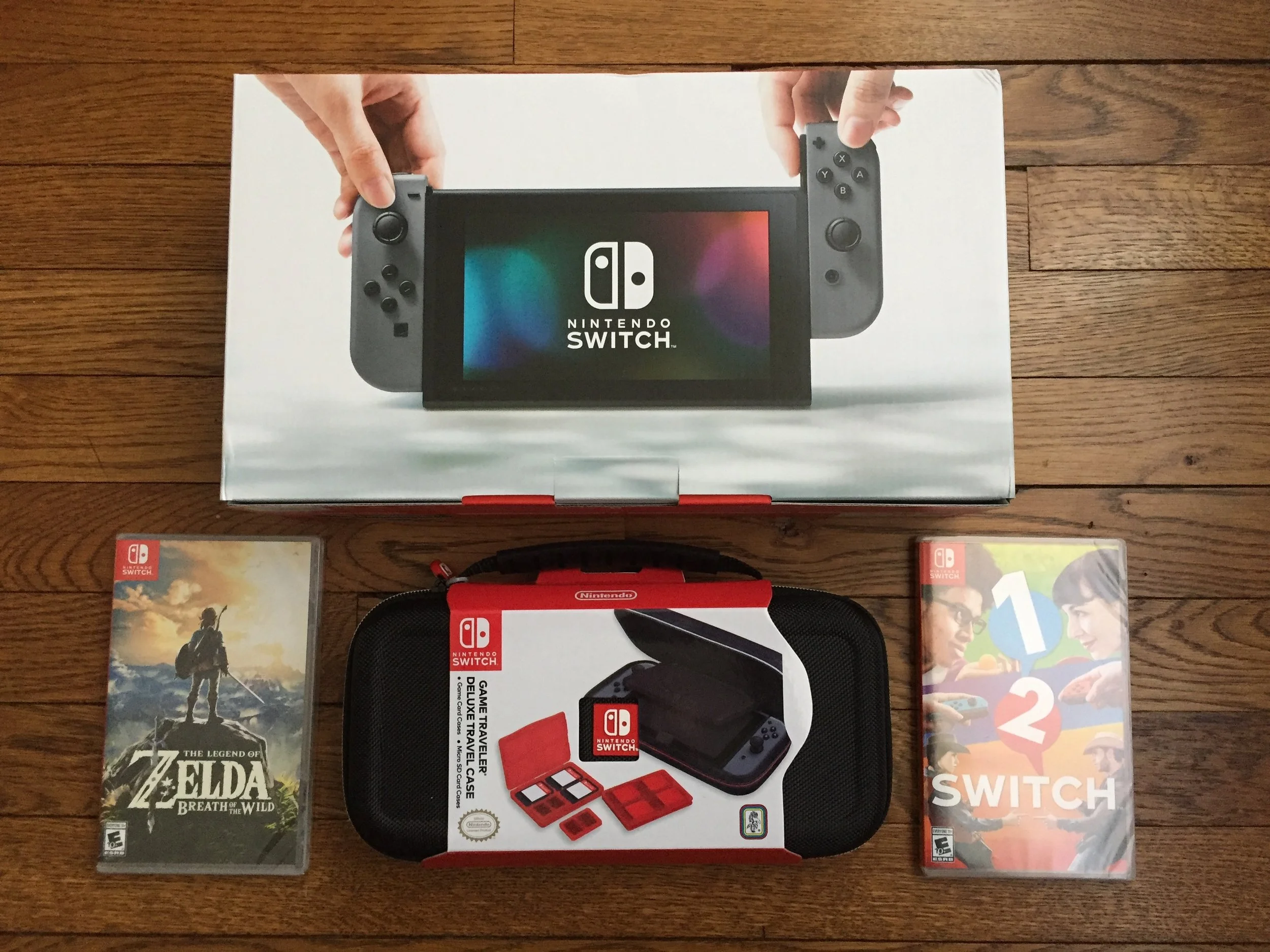It's been over two months since Nintendo released Super Mario Maker, a game that lets you build your own Mario levels. In that time, I've been trying to find time to write a review of it, but it's taken me this long because I can't stop playing this game. It's captured my imagination in a way that probably no other game has before, and it's finally Wii U's "killer app" to show why its tablet-meets-gamepad controller lets players do things no other console can offer.
If you're unfamiliar, Super Mario Maker essentially puts a simplified (but still very deep) version of Nintendo's own toolset to create Mario levels in one of four themes: Super Mario Bros. (NES), Super Mario Bros. 3 (NES), Super Mario World (SNES), and New Super Mario Bros. U (Wii U). Once created (and proven to be beatable), levels can be uploaded for others to enjoy. And that, of course, is the other half of the game: you have a virtually endless number of user-created levels to enjoy and play.
Remember those underwater triple Bowsers from the NES days? No? Me either. SMM revels in the absurd.
In general, working on a level can be both exhilarating and relaxing. I've gotten lost obsessing over exact object placement and building out unique designs, but I've also spent time puzzling over the best way to create "scripted" events or trying to get the flow of platforms and enemies just right. The latter is made easy thanks to the ability to freely swap between creating and editing stages with the director's clipboard icon in the lower-left of the screen whenever you're creation mode. You can place Mario anywhere on screen, toggle on a "trail" of Mario's path the last time you played (helpful for platform placement), and generally get a sense of what feels good versus what is too frustrating. It's really important (and fun!) to playtest your level as you build it out; but the real fun comes in watching someone else try your level, as you'll be quite surprised to find which sections of a stage pose the greatest challenge for your friends.
In typical Nintendo fashion, the charm is running high throughout the entire package, which makes more than a few nods to the SNES classic Mario Paint, also a game centered on creation (hint: tap any random flies you see!). Level creation is handled with the touch screen and stylus, which gives you the sensation of actually drawing the levels as you place the various elements: ground, platforms, question blocks, Goombas, Koopas, vines, pipes, and more. For anyone with an artistic sensibility, it's easy to spend a couple hours carefully crafting a level. Because you're mainly looking at the GamePad screen, it's a great pastime while someone else uses the TV (although it can also be fun to watch someone build a level, too, via the big screen). While editing a level, you'll hear a quieter, altered version of the standard music, and each item's name is "sung" as you place it. It's a weirdly-pleasing audio effect that adds to the fun.
Options galore!
For each level, you can pick one of the four game themes; but doing so is more than just a visual palette swap, as each game style inherits specific items and control options. For example, you can't pick up shells in an SMB level, you can only toss items straight up in SMW, and wall jumping is limited to NSMBU. While you can swap freely between the themes during level creation, once a level is uploaded, it's locked to that theme, which gives you, as a creator, a nice level of control. You also get an overworld and subworld for each level, which you can connect via any number of green pipes. Each half of the world can be one of six backgrounds: green grass/blue sky, cave, castle, ghost house, underwater, and airship. By using various combinations of these game themes and background styles, you can really craft little stories in your levels—or trick players into thinking it's one large world by using the same style on both parts of your level.
It would have been easy for Nintendo to have played it safe with Super Mario Maker, putting limits on player creations to better align with the expected rules of Mario level design. However, within seconds of the first level shown at last year's E3, which opened with a remixed portion of World 1-1 from Super Mario Bros., but quickly morphed into never-before-seen towers of enemies and fire bars, it became clear that Nintendo took a "nothing is sacred" approach to what players can do.
It's possible to do so many unexpected things as you tinker with the level creation suite that you'll find yourself flipping the script on what a Mario level can be. There are levels that tell stories, levels that rely on neat gimmicks, levels that play like a demented fever dream of limitless goombas, and even some old-fashioned "normal" levels thrown in for good measure. As you experience random levels through the "100 Mario Challenge" mode, which throws eight to sixteen user-created levels at you with 100 lives, you'll see the good, the bad, and the ugly. Thankfully, you can swipe away the annoying levels and try another. Even so, the randomness of this mode can be frustrating, and I've found far better levels by following popular makers, seeing levels they've starred, and scouring the web for levels featured on YouTube and other gaming sites.
THE POST-LAUNCH UPDATES
The best thing about this being a really late review, though, is that I can happily report that Nintendo released an update for the game that fixes two significant problems with level creation and a few other solutions to the discovery process. Oh, and there is now a harder version of the Mario Paint mini-game, Gnat Attack (which I already found to be really hard due to the unfairly-short timer).
First, they added the ability to create multiple checkpoints in a level, which is an absolute necessity for longer stages. Judging based on the Nintendo-created levels included with the game, I think the game's design team imagined shorter, quicker levels focused on a single theme; however, the reality is that people wanted to make the sort of sprawling stages they grew up playing. Without a checkpoint, these could become tiresome to play because there was no real sense of progression if you made it past a tough part because you'd just have to do the whole thing all over again. I suspect that many great stages have been overlooked simply due to player frustration that a checkpoint could have easily helped sidestep. Second, they added "progressive power-ups," which refers to a question block giving you either a mushroom or a fire flower depending on your current status (as seen in virtually every Mario game). This is less-important than the checkpoint system, but it does add a fundamental aspect of Mario's design vocabulary that players have every right to expect. And it does give creators yet another tool to fine-tune the difficulty of a stage—or reward players who are able to maintain "big Mario" status through a tough section in order to get the fire flower power-up. I'm already thinking of ways this could be used to "gate" alternate routes through a course for talented players.
On the level discovery side, they added an "Official" category of Makers and "Event" courses. The levels in the Official Makers category have been decent so far, if a little uneven in a quality. The weird thing is that many of them are from in-game characters, like the Undo Dog. My guess is that Nintendo is afraid to put real designer's names on these levels to avoid creating a popularity contest; but, let's be honest: I think everyone is waiting for a course by Miyamoto. The Event courses, though, which will change regularly, have been pretty cool so far, and lead to further unlockable 8-bit costumes. I think these will be a great way to give the game even longer legs with casual players not interested in the creation scene or with finding the best user-generated levels.
Finally, it's also exciting that, in the latest Nintendo Direct, Nintendo unveiled an upcoming Super Mario Maker portal site that will allow users to search levels by name, category, and so on. While it's annoying that this only works outside the game (PC and smartphone), it is nice that you can queue up levels while away from the game and have them appear in a playlist in the game by linking your Nintendo Network ID. As usual with Nintendo, it's a weird mix of smart and clunky.
SUMMARY
Ever since the early days of the Wii U's lifecycle with titles like Nintendo Land and ZombiU, which hinted at the future promise of the GamePad, games critics and industry pundits have bemoaned the system's tablet-hybrid controller as the answer to a question no one asked. While that may have been true at the time, if Nintendo had been playing Jeopardy! and got the clue "Reason to create a console that has a tablet for a controller, then "What is Super Mario Maker?" would have been the perfect response. This is a game that simply would not work on a PS4 or Xbox One and is a perfect example of Nintendo's brilliance at merging hardware and software. You need to be the freedom of touch screen and physical controls that only the Wii U can offer for a game to feel this cohesive and easy to learn.
If you're wondering whether this is finally a good reason to pick up a Wii U, the answer is a resounding "yes." Anyone can quickly get into making or playing levels, and there's a great mix of nostalgic fan-service and the unexpected rediscovery of a familiar formula. With 3.3 million levels uploaded so far (and counting), you're unlikely to ever run out of Mario levels to play.
Simply put, I've not had as much fun with a game in years. Consider Super Mario Maker a must-buy experience.











